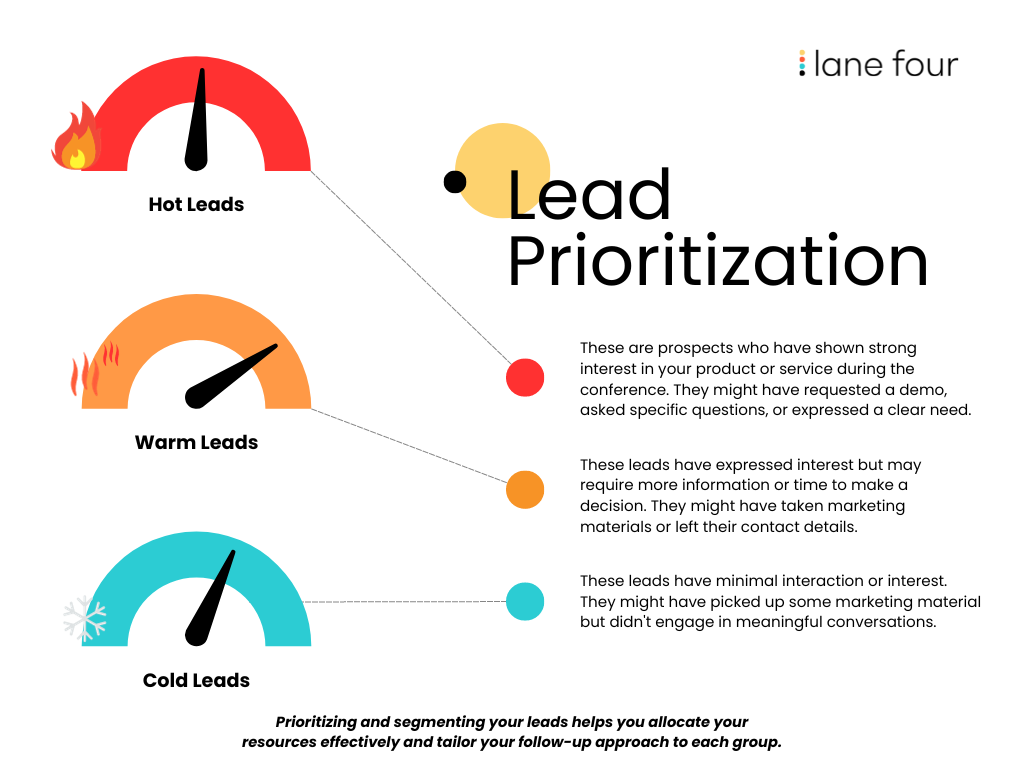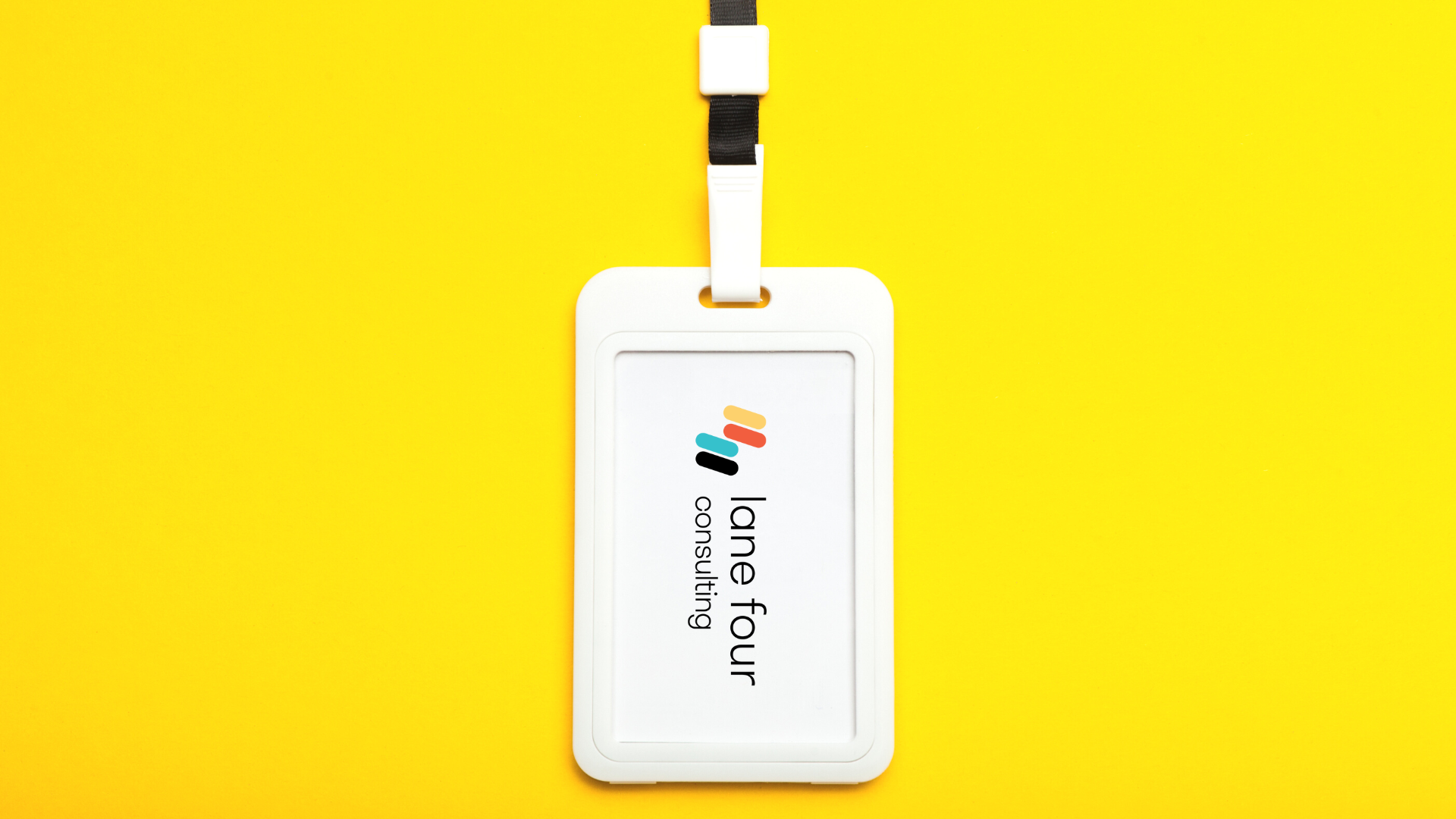The excitement of attending a conference is undeniable. Between Inbound and SaaStr last week, and Dreamforce this week, it’s safe to say fall conference season is in full swing! It’s an opportunity to network, learn from industry experts, and showcase your product or professional services to a wide audience. But what happens after the conference ends? How do you turn those promising leads into revenue? It’s time to put your post-conference plan into action. In this article, we’ll explore effective strategies to leverage your networking efforts and transform leads into revenue.
Getting Out What You Put In
Getting ready for a conference can really boost your chances of having a successful experience and getting the most out of your attendance. Effective pre-conference preparation is like having a secret weapon when it comes to making the most of industry events. So, while sometimes it feels like the time crunch is real leading up to events, consider it part of the event planning process as a whole in order to make it a priority.
Before you dive into the excitement of the conference, take a moment to do some homework. Check out the conference agenda, familiarize yourself with who the speakers are, and create a list of potential connections you’d like to make. Especially when these events can last anywhere from one to five days, having a plan in place can help you use your time wisely. Setting clear goals for what you want to achieve at the conference is a fantastic idea. Whether you’re aiming to gather a certain number of leads, build partnerships, or simply expand your industry knowledge, having these objectives in mind will guide your efforts.
And let’s not forget about your personal pitch! Crafting a brief and memorable introduction that highlights your unique strengths can leave a lasting impression on the people you meet.
Lastly, make sure to adapt your approach to the specific conference you’re attending. Tailor your networking strategy to fit the event’s size, format, and focus. Worried about not having enough time to prepare? Well, you can sneak in some research during your travel time or check out the event’s social media platforms – chances are, you’ll find yourself scrolling on your phone at some point before the event kicks off anyway!
Jump Into The Aftermath with a Carefully Executed Formula Sheet
Prioritize and Segment Your Leads
After a conference, you’ll likely have a long list of contacts and potential leads. The first step is to prioritize them. Not all leads are equal. Some may be hot leads ready to convert, while others may need nurturing over time.
Segment your leads into categories based on their level of interest and engagement. For instance:

Promptly Follow Up
Timing is crucial when it comes to converting leads into revenue. Don’t let too much time pass before reaching out to your leads. Better yet, a good practice is to even connect with them over LinkedIn during that first conversation! Within the first one to two days post-conference, it’ll be time to break through the noise and try to beat the competition to the punch. Send a personalized follow-up email within those first couple days following the conference, referencing the conversation you had, sharing relevant resources, and expressing your interest in continuing the discussion.
For hot leads, consider scheduling a follow-up call or meeting right away. Strike while the iron is hot and the conference experience is fresh in their minds.
Personalize Your Outreach
Generic, one-size-fits-all messages rarely convert leads into paying customers. Tailor your follow-up emails and messages to each lead’s specific needs and interests, especially if you dove into conversation with them at the event. Reference the discussions you had during the conference and address their pain points with your solution. Personalization shows that you value the relationship and are genuinely interested in solving their problems. It significantly increases your chances of converting leads into revenue.
Provide Value
In your follow-up communications, focus on providing value rather than pushing for a sale. Share informative content, case studies, or industry insights that can help your leads address their challenges. Position yourself as a helpful resource and a trusted advisor. If you’re a ProServe-based business, you can even try pinging a subject matter expert (SME) at your company for some extra information about what this prospect’s project may entail, just to help paint a realistic picture for them. By providing value, you not only nurture your leads but also build credibility and trust, making them more likely to choose your SaaS solution.
Implement a Lead Nurturing Strategy
Not all leads are ready to buy immediately after a conference. Many may need more time and information to make a decision. Implement a lead nurturing strategy that includes automated email workflows, educational content, and periodic check-ins. Stay top-of-mind by sending relevant updates and insights. As your leads move through their buyer’s journey, be there to guide them with the information they need.
Measure and Adjust
To optimize your post-conference action plan, it’s essential to measure its effectiveness. Use key performance indicators (KPIs) such as conversion rates, email open rates, and engagement metrics to track progress. If certain strategies aren’t yielding the desired results, don’t hesitate to adjust your approach. Continuously refine your post-conference plan to improve your lead conversion rates.
Leverage Technology
Modern technology plays a vital role in post-conference lead conversion. Customer relationship management (CRM) software, marketing automation and sales engagement tools, as well as analytics platforms can streamline your efforts. They help you track interactions, segment leads, and deliver targeted content at the right time. Investing in the right technology can make your post-conference action plan more efficient and effective.
Foster Relationships with Decision-Makers
While engaging with leads, don’t forget to build relationships with decision-makers and C-suite personas. They often have the final say in purchasing decisions. Customize your approach for this audience, focusing on the value your SaaS solution brings to their organization.
Plan for the Long Term
Converting leads into revenue is not always a quick process. Be patient and plan for the long term. Some leads may take weeks or even months to convert into paying customers. Stay committed to nurturing these relationships and consistently providing value.
“Stay committed to nurturing these relationships and consistently
providing value.”
Learn from Every Conference
Each conference you attend is a learning opportunity. After the event, conduct a debriefing session with your team to evaluate what worked and what didn’t in your post-conference action plan. Use these insights to refine your approach for the next conference.
Attending a conference, be it one as big as Dreamforce, or a small-scale networking evening, is just the beginning of your journey to turning leads into revenue. By prioritizing leads, personalizing outreach, providing value, and implementing a well-thought-out post-conference action plan, you can effectively convert leads into loyal customers. Remember, success in the SaaS industry often hinges on your ability to build relationships and nurture them over time.
